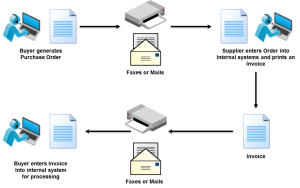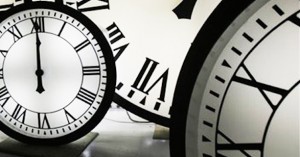— October 17, 2018
“I was stuck in meetings.”
It’s the default answer for how senior leaders spend the majority of their time, and it’s wreaking havoc on organizational productivity. That isn’t just my opinion.
Researchers from Harvard Business School and Boston University surveyed 182 senior managers across industries and their results were telling: 65 percent said meetings keep them from completing their own work, 71 percent found them to be unproductive and inefficient, and 62 percent said meetings miss opportunities to bring the team closer together.
Meetings are a standard event in any workplace, much to the chagrin of Mark Cuban and Elon Musk. Cuban in particular considers meetings to be a complete waste of time. “The only way you’re going to get me for a meeting is if you’re writing me a check,” he told Inc. Musk recently urged Tesla employees in a company-wide email to forgo excessive meetings, calling them a “blight” on large companies.
Although they can provide some benefits, like opportunities for collaboration and face-to-face interactions, meetings also undercut job performance. That is a problem. It was for me personally. So, I decided to take my calendar back and get a lot more intentional around my own approach to meetings. I borrowed some practices from people I admire and incorporated some of my own protocol to stop wasting time in bad meetings.
I do this instead.
Never Hold a Meeting Before 10 a.m.
My morning routine is a sacred ritual that prepares me to enter the creative zone and do my very best work. A 9 a.m. meeting completely destroys the opportunity to deliver on deep work in the morning, so I stopped having them. No exceptions. I have two people supporting my calendar, and it was easy for them both to take arbitrary, available time to lock in a call or meeting request. It was destroying my ability to make things.
I require long blocks of time reserved for focusing on particular tasks, and now every office day can begin with quality creative time. With a clear understanding of my specific work habits, preferences and peak-productivity periods, my team is better equipped to support my calendar. Once I was clear about only reserving part of the day for meetings, both my productivity and personal wellness soared. We’ve built on this protocol by also banning meetings that don’t deliver me home by happy hour on Friday evening. The weekends aren’t for working; they’re for rest.
Start with Recognition About What’s Going Right, and Tell a Story
The best meetings start with recognition of something that’s going right. Opening with recognition reinforces the mission and connects people to something larger than themselves. This is an opportunity to galvanize the team around common goals, but often it’s an opportunity missed by management. A great approach to recognition and reinforcing the right behavior is storytelling. According to research from Chip and Dan Heath, 65 percent of people can recall stories after a presentation, while only 5 percent can recall statistics.
At The Ritz-Carlton, they have a meeting version of the huddle called the Daily Line-Up. This is a standing meeting that includes all staff and takes place at the beginning of each shift. It typically takes about 15 minutes, but it has a lasting impact on employee engagement and organizational culture. The Daily Line-Up is the time to share organizational news or stories, to recognize employees or departments for outstanding achievements, and to communicate announcements that affect the team.
The Ritz-Carlton’s version regularly includes celebrations and employee recognition. The recognition can come from leaders or from colleagues who want to express gratitude to co-workers. It produces a team atmosphere.
Have a Purpose, Have an Agenda and Make Decisions About Moving Forward
This one seems obvious, but too often people plan meetings without a clear idea of what they want to accomplish. These are filled with status updates, discussions that go nowhere and other time-wasters. Even worse, they can get positioned as “networking” or “brain pickings.” Those are the kind of meetings I refer to as “coffee shopping.” I avoid them altogether.
A new survey from AtTask of U.S. employees at companies with at least 500 employees found that the top factor getting in the way of work is “wasteful meetings,” cited by 62 percent of respondents.
So start with a purpose: What do you need to accomplish at this meeting? What are the decisions that need to be made? And what’s the shortest amount of time you need to make that happen? The arbitrary one-hour meeting assignment should evolve. We schedule them in 15-minute intervals because that’s way more efficient.
Try Jeff Bezos’ ‘2-Pizza Rule’
Large organizations should take a page from the Amazon playbook and roll with the two-pizza rule for meetings. That means not having more people in the room than could be fed by two pizzas. The bigger the group, the more opportunity for distraction, disengagement and wasted time. Only include key players who are needed to make the decisions and move things forward. Imagine the productivity that could be returned to an organization if it stopped hosting conference calls with 62 attendees, 50 of whom were on e-mail or multitasking the entire time.
Two pizzas. Also, it doesn’t hurt to serve actual pizza sometimes.
Ban Laptops and Phones
Some organizations are banning laptops so employees won’t be tempted to multitask during meetings. This isn’t old school; it’s a clear productivity hack.
We all like to think we’re good at multitasking, but the research couldn’t be clearer on this: We suck at it.
Laptops and phones at meetings often send the wrong message. If what’s on the screen is more important than the meeting agenda, do you really need to be meeting? I‘m writing this while my phone is in another room. That’s because the odds of writing something halfway decent during a stream of constant distraction isn’t very good. Just as importantly, it would take twice as long.
Give the no-device policy a test. Encourage people to be present and engaged, and watch the productivity of meetings for your team improve dramatically.
The Takeaway
We are meeting way too much, without a solid outcome for the business. Better leaders use meetings not as a way to fill time but as a way to connect with each other to get things done.
The next time you schedule a meeting, consider a few questions to make it count:
- Is this meeting necessary?
- What’s the objective?
- Who absolutely needs to be there?
- What’s the minimum amount of time required to accomplish the objective?
- Is the benefit worth the cost of pulling these people together?
And don’t forget the pizza.
Business & Finance Articles on Business 2 Community
(73)





